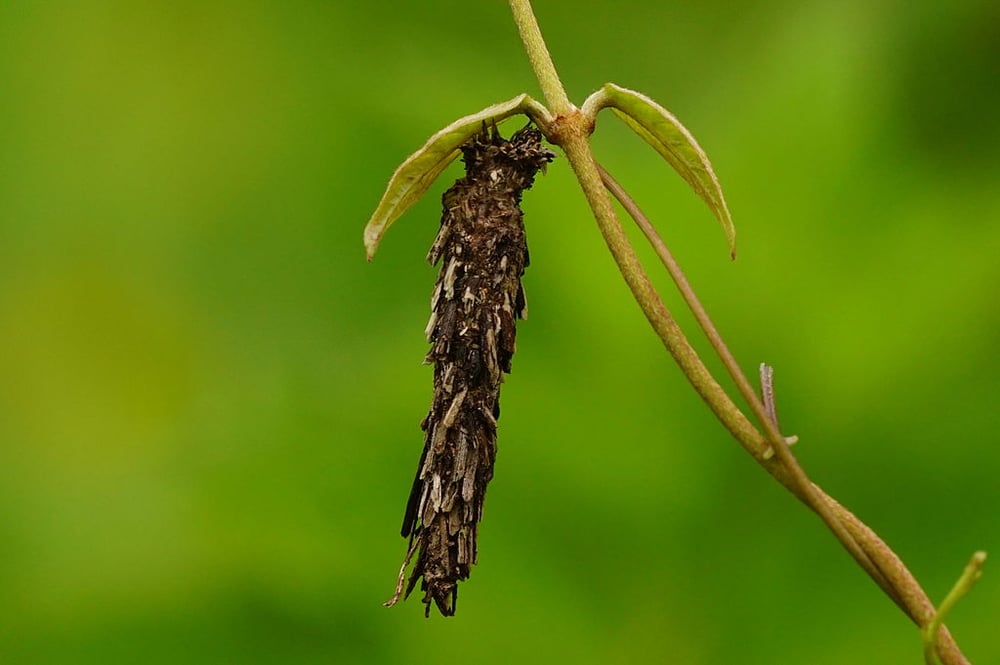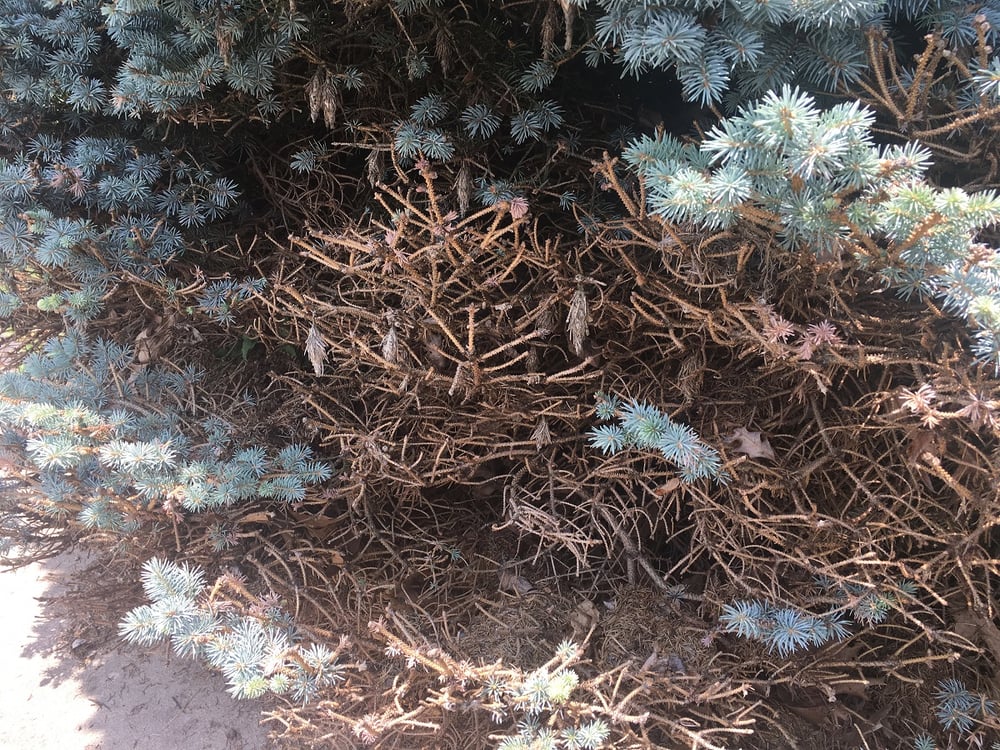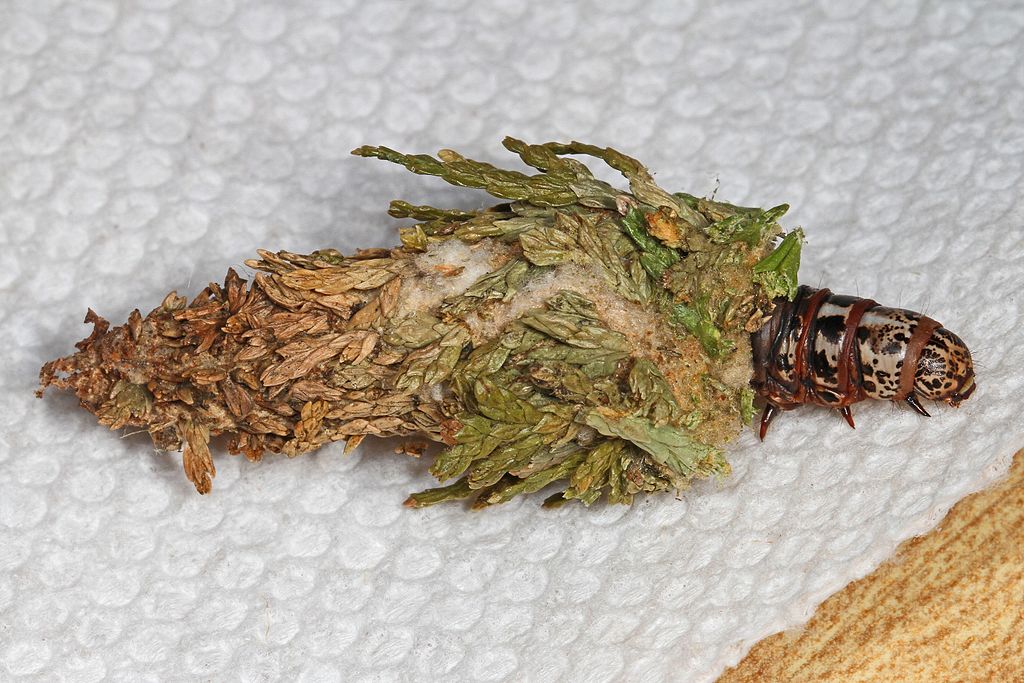Your trees and shrubs are valuable assets on your property. They not only enhance your landscape with aesthetic appeal but they often add functional purposes like creating privacy or screening unwanted views.
With all of this value attached to your landscape, the last thing you want to see is something happen to it.
That’s why you may become concerned if you’re noticing your trees and shrubs turning brown. You may suspect you have an infestation of bagworms and you may not know what to do.
Unfortunately, most property owners have no idea that this kind of damage was even occurring until it’s too late.
First of all, you aren’t alone. It’s incredibly common for property owners not to catch bagworm damage in its early stages. Oftentimes the damage goes unnoticed until it’s progressed dramatically. Understanding more about bagworms and how to deal with them can help you make wise decisions that will protect your landscape.
What are Bagworms?
Bagworms are a type of caterpillar. They are characterized by the case or “bag” that they form to shelter from weather and predators.
The bag is made from silk and pieces of the plant’s foliage. It can be as large as 2 inches and may be spotted hanging from a tree’s branches long before an actual pest is ever spotted.
 Although “bagworms” and “webworms” are often used interchangeably, these are 2 very different pests.
Although “bagworms” and “webworms” are often used interchangeably, these are 2 very different pests.
Although they do form protective nests (“webs”), webworms typically appear later in the season—as late as August or September, and feed in the midst of these larger webs, unlike the bagworm which constructs a silk and foliage casing around itself. Webworms are also far less destructive to trees and shrubs than bagworms.
The Bagworm Lifecycle
Bagworms overwinter as eggs inside of the bag. Eggs hatch between late May and early June into small larvae about ¼” long.
Once hatched, young larvae crawl out of the bag and begin feeding right away. The young pest also begins construction on its own bag, which will protect it as it feeds and develops.
They will feed for approximately 6 weeks, continuing to grow to 1” or longer, and retreating into their bag whenever disturbed.
In early fall, the mature larvae will attach their bags to twigs and transform into pupa before becoming adults. Males will come out of their bags in early fall and search for females. After mating, the female will lay several hundred eggs which remain inside of the bag until they hatch the following May, beginning the cycle all over.
This is a problem that can perpetuate year after year in a never-ending cycle.
Bagworm Damage to Plants
Young bagworms may leave small holes in the foliage after feeding. Mature bagworms, on the other hand, strip evergreens of their needles and devour whole leaves leaving only the larger veins.
When found in great numbers, these pests can defoliate plants in a very short time. Heavy infestations can lead to the plant’s death in just a matter of a few weeks.  Bagworms appear to prefer evergreen species such as:
Bagworms appear to prefer evergreen species such as:
- Arborvitae
- Juniper
- Pine
- Spruce
Bagworms have also been known to attack certain deciduous trees, including:
- Black Locust
- Honeylocust
- Willow
- Sycamore
Early detection of bagworms on trees or bagworms on shrubs is key to the best possible outcome.
Bagworm Treatment & Control
Killing bagworms can be done by hand-picking or cutting the bags from the infested plants before they hatch. Unfortunately, this is only effective if you do not have a total infestation.

When bagworms are too numerous to take care of by hand, then more serious bagworm treatment may be warranted with the use of a professional product. It’s important that product is applied while the bagworms are still actively feeding so that the product will work.
In terms of bagworm control, if you can spray your likely host plants in late spring/early summer, then you can prevent having a bagworm problem in the first place.
In general, a plant health care program is all about preventative care. Besides protecting your trees and shrubs from bagworms, it will protect against other common insects like mites and various borers.
There are so many different types of pests that pose a threat to your precious trees and shrubs without you noticing until the problem has progressed to a serious level. Why not be protected from all of them and prevent damage in the first place?
Are There Bagworms in Your Trees & Shrubs?
The key to success for any problem with your trees and shrubs comes from proper identification.
While bagworms are a common pest, there are also many others. And the truth is, oftentimes a problem may actually be a combination of issues. For instance, a tree or shrub that is already experiencing environmental stressors may be more susceptible to bagworm damage even in its early stages.
This is why it’s so valuable to have a tree and shrub expert visiting your property on a regular basis.
An expert would be able to spot a problem in its early stages and get a plan of action underway. Plus, an expert would know whether it’s a pest, a disease, or something else altogether that is causing your problem.
By being part of a plant health care program and receiving ongoing visits from a professional, you can feel confident that your landscape is protected from threats.
With the right care for your trees, you’ll gain valuable peace of mind. If you’re interested in having your trees inspected and their health assured, contact us for a free consultation or give us a call at 833-JTE-TREE.
Image sources: bagworm feeding on evergreen, bagworm on a deciduous plant, bagworm with casing



